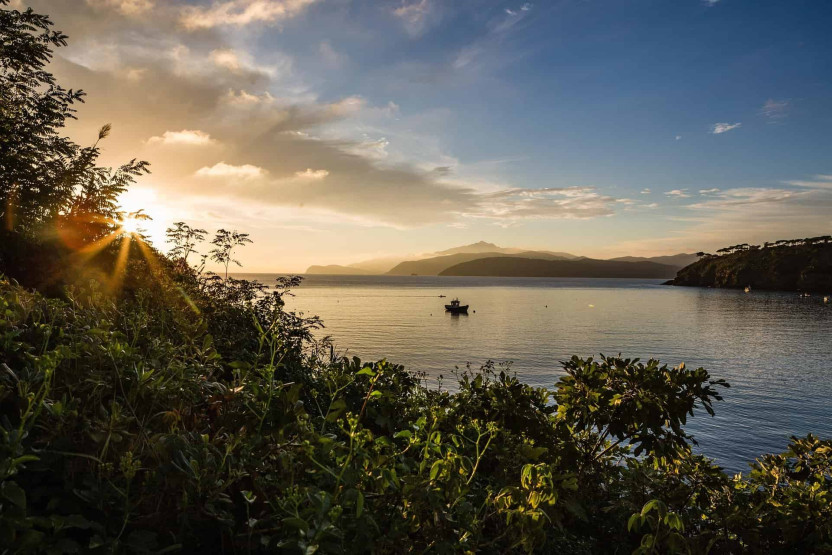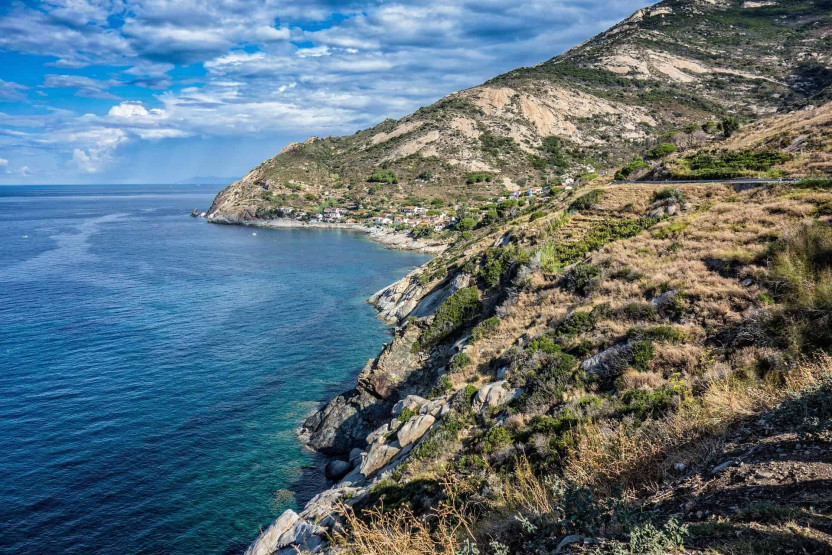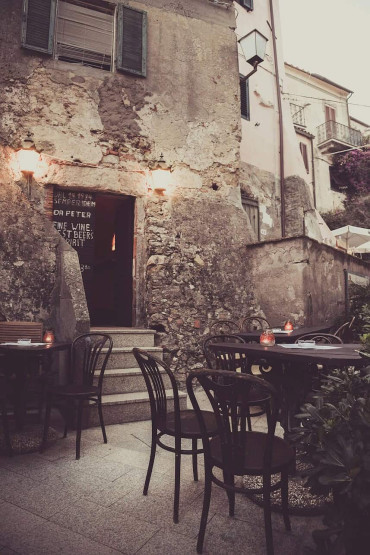
Elba, Italy’s third largest island, is located in the Tyrrhenian Sea and is part of the Tuscan Archipelago National Park. It’s famous for its mix of beaches, coves, and hilltop villages, making it a hidden gem for travelers seeking natural beauty and history.
Getting there, especially by ferry, is the most practical way for most visitors. And I love traveling by ferry. It gives your trip that extra something when you get on the ferry with other visitors and all the trucks with their goods. And it makes you feel even more like you are visiting an island.
This guide covers everything from ferry companies and schedules to prices and personal tips, balancing the ups and downs to help you plan a smooth trip.
How do you get to Elba?
Here is a quick overview.
Most travelers head to Elba via ferry from Piombino, a port town in Tuscany about two hours from Florence. It’s the closest and most convenient departure point, with ferries reaching Elba’s main ports: Portoferraio, Rio Marina, and Cavo.
There are also options from Livorno, slightly further away, but with more frequent departures, which might suit some itineraries.
Travel times range from 15 minutes to 1 hour, depending on the route and operator.
Booking early is recommended, especially in peak season (July-August), to avoid crowds and higher prices.
I recommend you to compare prices and routes for the best way to reach the island of Elba.
 Sunrise at Portoferraio in Elba, Italy.
Sunrise at Portoferraio in Elba, Italy.
Ferry Options and Companies
The main ports on Elba are Portoferraio, Rio Marina, and Cavo. Depending on where you want to stay and the prices, you may prefer one or the other.
Several companies operate these routes, including Blu Navy, Corsica Ferries, Toremar, and Moby Lines. Moby Lines is great for families, with frequent departures and comfy seating, while Toremar offers the fastest route, like Piombino to Cavo in just 15 minutes.
Prices typically start at €18, but can go up to €35 or more during peak times, especially if you’re bringing a car. More info on that later. It’s wise to compare options online to find the best deal.
Schedules and Tips
Ferries run daily, with schedules starting as early as 05:30 and going until 22:30.
Travel times vary: Piombino to Portoferraio takes 40 minutes to an hour, Rio Marina about 45 minutes, and Cavo as quick as 15 minutes.
Booking early is key, especially in July and August, when ferries can get crowded. Also, parking at Piombino can be tricky and costly.
Flying to Elba
Yes, you could fly to Elba. The airport of the island of Elba, located in La Pila, is only 2 km from Marina di Campo. And there are direct flights to Pisa, Florence and Milan Linate in Italy, to Mannheim and Friedrichshafen in Germany and to Altenrhein and Bern in Switzerland.
As you can see, most of those airports are not the well known and big ones. So don’t expect the big airlines either. The ones that fly there are smaller airlines with small planes, as it’s a short runway and tiny airport.
![]() Town Portoferraio in Elba, Italy.
Town Portoferraio in Elba, Italy.
Why Elba? A Quick Intro
Elba is not just another Italian island. It’s Tuscany on an island. Yes, Elba belongs to the region of Tuscany and is part of the province Livorno.
It’s a paradise with crystal-clear waters, rugged coastlines, and a rich history, including Napoleon’s 10-month exile in 1814. Whether you’re after relaxation on sandy beaches or hiking through its hills, Elba delivers.
But getting there requires a bit of planning, and that’s where ferries come in. The effort is worth it, but let’s talk logistics and get more into the details.
Ferry Companies: Who’s Who and What’s What
You’ve got several ferry companies to choose from, each with its strengths. Here’s a breakdown based on my research:
- Blu Navy: Known for competitive pricing and reliable service, especially for budget travelers. They operate routes like Piombino to Portoferraio and Rio Marina.
- Corsica Ferries: Not just for Corsica, they also connect Piombino to Elba, with options for island-hopping if you’re extending your trip.
- Toremar: My go-to for speed. Their Piombino to Cavo route takes just 15 minutes, perfect if you’re short on time. They also run hydrofoils, though note some don’t allow cars.
- Moby Lines: A bit more family-friendly, with comfy seating and frequent departures. Great for groups, and they often have deals for families, which I noticed when comparing prices.
Prices start at €18 for a foot passenger, but can climb to €35 or more during peak season, especially if you’re bringing a vehicle. It’s not recommended to book last minute for a summer trip, which then can cost €35 instead of €18. Always compare options, as prices vary by operator, route, and seasonality. For example you can find prices like $231 for Piombino to Portoferraio, which then includes 4 passengers, a car and at peak times. You should be able to find cheaper ones.
 Port of Rio Marina in Elba, Italy.
Port of Rio Marina in Elba, Italy.
Schedules and Practical Tips
Ferries run daily, with schedules typically starting at 05:30 and going until 22:30, depending on the operator.
Travel times vary by route: Piombino to Portoferraio takes 40 minutes to an hour, Rio Marina about 45 minutes, and Cavo as quick as 15 minutes with Toremar.
Depending on your route and arrival at the port, take an early morning ferry, as the sunrise over the Tyrrhenian Sea is a highlight. Be prepared for a sleepy port at 5 AM. A such early departure is usually cheaper as well.
Good to know: Most companies now offer online check-in, which saves time at the port, so take advantage of that.
If you’re traveling without a car, most ferries allow foot passengers, and you can leave your car in Piombino’s parking lots, both free and paid. If you should decide to bring a vehicle, check ahead, as some ferries might not have car decks.
Here’s a table summarizing the key routes and durations, based on recent data:
| Route | Average Duration | Frequency (Daily/Weekly) | Price Range (EUR) |
|---|---|---|---|
| Piombino to Portoferraio | 40 min – 1 hour | Up to 29 daily | 18 – 35+ |
| Piombino to Rio Marina | 45 minutes | Up to 4 daily, 27 weekly | 18 – 35+ |
| Piombino to Cavo | 15-30 minutes | Up to 10 daily | 18 – 35+ |
| Elba to Corsica | 1.5 hours | 2 weekly | Varies, check online |
| Elba to Pianosa | 45 min – 2 hours | Up to 3 weekly | Varies, check online |
Note: Prices and schedules can change, especially in high season, so always verify closer to your travel date. Booking early helps lock in lower rates and avoid sold-out ferries.
 Taking a ferry to Elba, Italy.
Taking a ferry to Elba, Italy.
Beyond Piombino: Other Connections
While Piombino is the main hub, there are also connections to Corsica and Pianosa from Elba, which could be a bonus if you’re island-hopping.
For example, Corsica Ferries runs a 1.5-hour route from Portoferraio to Bastia, twice weekly, which sounds like a scenic ride.
Island hopping sounds good, right?
Read as well our Corsica Travel Guide – Lonely Beaches, Beautiful Nature and a Paradise for Hikers
Sardinia is also a great Italian island destination. Here is our guide on about how to get to Sardinia.
And here we have listed the best beaches in Sardinia, the best towns to visit in Sardinia and places to stay in Sardinia.
Challenges and How to Handle Them
Let’s be real—there are downsides. You might have a long drive before you catch your ferry. Then crowded ferries in peak season can feel chaotic, and parking at Piombino isn’t always smooth. Expect that some companies raise prices as ferries fill up, so booking early isn’t just about availability—it’s about saving money.
But with a bit of planning, these challenges are manageable. Book online, compare prices, and arrive early to avoid stress. I like to include 1-2 overnight stops on the way to the ferry so we can explore cities we haven’t visited yet. Then most operators issue electronic tickets, which makes check-in easier.
Read as well our travel tip about the benefits of an eSIM card when traveling.
Why It’s Worth It
Elba is worth a visit. I’m sure you won’t regret exploring this Tuscan island, whether you’re lounging on the beach or exploring its history.
I recommend to visit Elba late May, June, or September to avoid August crowds. And the hilly terrain suggests renting a car.
Activities include swimming, hiking and local cuisine such as seafood and focaccia. Elba is less crowded than other alternative typical Italian destinations and ideal for nature lovers.
Imagine biking early to Panetteria Mara in San Piero for sweet focaccia before it sells out, then swimming at Sansone Beach, spotting starfish while snorkeling. Hike to Faro di Capo Poro lighthouse for bay views or take the cable car to Mount Capanne for panoramic vistas. Explore hilltop villages like Capoliveri for shopping, and enjoy live music by La Compagnia Scapestrati at summer venues. At night, sip a Negroni at a Beach Club in Marina di Campo under the moonlight.
What else do you need?

Sunset at the sea in Elba, Italy.

Coastline at Elba, Italy.

Bar in Elba, Italy. Photo by kiwihug -unsplash.
-
I’m sure you’ve had similar experiences I had whilst traveling. You’re in a certain place and a fellow traveler, or a local, tip you off on a little-known beach, bar or accommodation. Great travel tips from other travelers or locals always add something special to our travels. That was the inspiration for Travel Dudes.
View all posts I’m sure you’ve had similar experiences I had whilst traveling. You’re in a certain place and a fellow traveler, or a local, tip you off on a little-known beach, bar or accommodation. Great travel tips from other travelers or locals always add something special to our travels. That was the inspiration for Travel Dudes.
